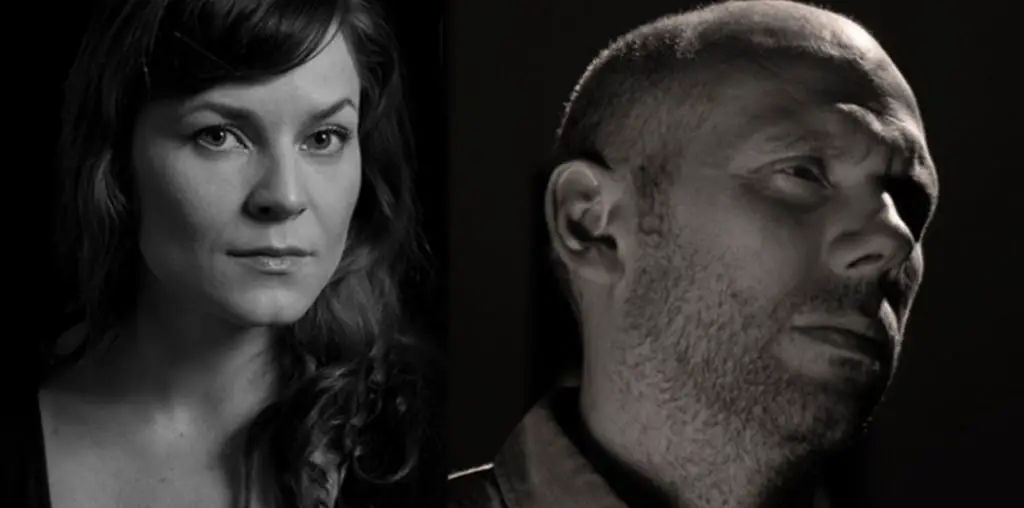
It’s no surprise that Robert Aldrich’s “What Ever Happened to Baby Jane?” caused an immediate sensation back in 1962. The 1930s Lugosi/Karloff match-ups at Universal Studios only suggested the potential of what a decades-long feud like Bette Davis and Joan Crawford could produce. After years of American horror ruled by alien invasions and oversized bugs, and hot off Hitchcock’s revolutionary “Psycho,” the landscape was ripe for another human monster.
As well known for her acting genius as for her sharp tongue, Davis circa 1962 appeared ready to rear an evil eye and witch’s sneer. Crawford, the unique beauty of “Mildred Pierce,” had also acquired a hardened, haunting gaze. Since age had gained upon beauty for both, producer/director Robert Aldrich acknowledged the two performers’ “monstrous” potential – and by unleashing them face-to-face, he became a ringmaster. The new arrival of “What Ever Happened to Baby Jane?” on DVD offers an opportunity to reflect on the film’s success: how the full-tilt performances of Davis and Crawford invigorated a run-of-the-mill scenario and an inappropriately melodramatic score.
Davis is Jane, the original poster child for Mothers Against Child Celebrities. The backstory scenes of Baby Jane Hudson, a child vaudeville star, are so nauseating that modern viewers may beg for that goddamn “Jerry Maguire” kid. While intentionally irritating, these scenes lay down enough dread to ready you for the lunacy that Jane will develop. Baby Jane also seems to be a commentary on past fads, the ones that make us question: why the hell were we into that? Her morose sister, Blanche (the role to be taken up by Crawford later in the film), faces the dual punishment of having to witness her sister’s acts and receive her bratty abuse.
With Baby Jane’s stench still in the air, the film jumps forward to her maturity. We soon learn that Blanche has become her sister’s worst nightmare: as a high-demand movie star, Blanche keeps Jane employed in the entertainment industry. (It feels as if the filmmakers were toying with ways to get Davis’ juices going.) So there is credible motivation for crazy Jane to pin her sister between a car bumper and a garage door, thus ending the pre-opening-credits sequence and beginning the film’s well-known madness.
Those versed with Crawford’s legacy – wretchedly immortalized by Faye Dunaway in “Mommie Dearest” – may be surprised to find her a crippled, locked-up punching bag for Davis. While living off Blanche’s savings, Jane has become her sister’s resident tormentor. With a mask of white make-up, Jane looks as if she’s fresh from a silent-era carnival. She mistreats her sister’s pet bird, then breaks Blanche down by preparing her quite special dishes – always raw and un-skinned. Unable to notify the neighbors or reach the downstairs level, Blanche finds hope in her maid, Elvira (Maidie Norman), who instead becomes another target for Jane.
Creepy enough with Davis’ rants and cackles, an increasingly corpse-like Crawford, and the former’s relentless abuse – Jane’s full-tilt kick to Blanche’s head still provides a shock – the film chills the most with Jane’s quest to regain her childhood fame. When angry she plays the ravaging crone, but when overcome she regresses back to childishness. The most effective scene is when Jane rehearses her 50-year-old hit children’s song, “I’ve Writ-ten, a Let-ter, to Dad-dy.” Davis delivers the maudlin lyrics while convincingly conjuring up Jane’s younger self. With gestures right in sync with her ironic vocals, the dark performance creates a new tone for the film.
Accompanying her on piano is Edwin (Victor Buono), whom she has hired to help her regain her stardom. While this portly British mama’s boy is far from the fairly hunky Joe Gillis, Edwin is one of many elements that effectively recall “Sunset Blvd.” Like Gillis, Jane’s Boy Friday develops into something more than just a hired hand. And while unable to summon the tragic grandeur of Norma Desmond’s famous “close up,” the latter-day Jane’s “I’ve Written a Letter” creates just as many chills.
The juicy bouts also illustrate the film’s wealth of trivia, including how Davis installed a Coke machine on the set to piss off Pepsi heiress Crawford, and how the latter sought vengeance by hiding weights under her clothes when Davis had to carry her. A commentary track by Charles Busch and John Epperson (a.k.a. “Lypsinka” the drag queen) touches upon some of the trivia, but is mostly geared toward the camp cults of Bette and Joan.
Other extras on the second disc include the 1994 documentary “All About Bette,” which offers many clips and interview footage to create a concise portrait. An archival British interview with Joan Crawford, who’s ever so eloquent and always one step ahead of her interviewer, also intercuts footage from throughout her career. (She even cuts the floorwax opposite Fred Astaire in one hell of a dance number.) A bonus comes in the form of 1962 footage from the “Andy Williams Show.” Davis appeared to promote “Baby Jane’s” release by performing a ‘60s-pop version of the title song (which has hardly any association with the film). Davis’ camp followers will find more than enough for the price of a rental here, as this is an outright pleasure for the ears and eyes. (Davis was down with Chubby Checker back in ‘62!)
A new documentary, “Bette and Joan: Blind Ambition,” highlights the legacy of the film, its two stars, their feud, and provides background on the project that spawned a genre, including Aldrich’s own “Hush…Hush, Sweet Charlotte” and “What Ever Happened to Aunt Alice?” (A forgettable 1991 TV remake of “Jane” features the Redgrave sisters.) More fun can be found by imagining what else transpired between Davis and Crawford as they went from bout to bout onscreen in what manages to be both a campy and uniquely unnerving experience.
